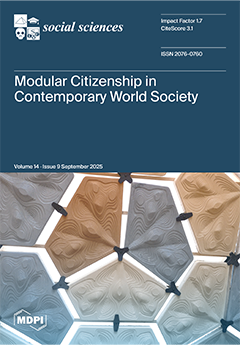Background: Individuals who are victimized and exploited by the heinous crimes of human trafficking (HT) access healthcare during their exploitation, yet gaps in education on HT content exist in prelicensure nursing programs. This study explored the impact of an HT simulation on
[...] Read more.
Background: Individuals who are victimized and exploited by the heinous crimes of human trafficking (HT) access healthcare during their exploitation, yet gaps in education on HT content exist in prelicensure nursing programs. This study explored the impact of an HT simulation on nursing students’ preparedness in the identification of victims as well as their perceptions of the impact of this educational intervention on future practices.
Methods: A quasi-experimental design with a qualitative component was used. A convenience sample of 120 nursing students were recruited. The participants completed a pretest survey, viewed a preparatory education video, and participated in the simulation followed by a debriefing, a 20-min video, and posttest survey.
Results: More than 3/4 of the participants reported no previous exposure to this content. A paired sample
t-test showed efficacy (
p < 0.001) with a Cohen’s
d > 0.8, illustrating an increase in knowledge gained. The qualitative data yielded four themes: eye-opening, educational and informative, increased awareness, and preparedness.
Conclusions: Nurses are well-positioned to identify, treat, and respond to victims of HT. The findings underscore the critical need to incorporate comprehensive HT content into prelicensure nursing curricula. Through integration of an HT simulation, future nurses can be better prepared to address this pervasive issue, ultimately improving victim outcomes and ensuring progress towards UN Sustainable Development Goal 5 of
Gender Equality and Goal 16 of
Peace, Justice, and Strong Institutions. In addition, addressing this topic in prelicensure nursing education ensures that future nurses are not only clinically competent but also morally and emotionally prepared to handle the complexities of HT in their professional roles.
Full article





